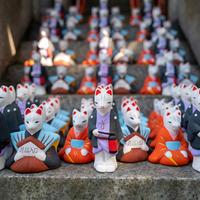鎌倉 パート1
かまくら|ぱーと
Kamakura Teil 1
Kamakura Μέρος 1.
Kamakura Part 1
Kamakura Parte 1.
Kamakura Partie 1.
Kamakura Parte 1.
가마쿠라 파트별
Kamakura Deel 1.
Kamakura, część 1.
Kamakura Parte 1.
Камакура Часть 1.
Kamakura del 1.
Kamakura Bölüm 1.
Камакура Частина 1.
镰仓第 1 部分
镰仓第 1 部分
鎌倉第 1 部分
2010 年 4 月 29 日
ゴールデンウィーク の 1 日 目 、 私 は 鎌倉 に 行って き ました 。
とし|つき|ひ|||ひ|め|わたくし||かまくら||おこなって||
29\. April 2010 Am ersten Tag der Goldenen Woche ging ich nach Kamakura.
April 29, 2010 On the first day of Golden Week, I went to Kamakura.
2010 년 4 월 29 일 황금 연휴 첫날, 나는 가마쿠라에 다녀 왔습니다.
29 kwietnia 2010 r. Pierwszego dnia Złotego Tygodnia pojechałem do Kamakura.
29 de abril de 2010 No primeiro dia da Golden Week, fui a Kamakura.
2010年4月29日黄金周的第一天,我去了镰仓。
鎌倉 は 、 東京 の 隣 の 神奈川 県 に ある 古い 街 です 。
かまくら||とうきょう||となり||かながわ|けん|||ふるい|まち|
Kamakura ist eine alte Stadt in der Präfektur Kanagawa, neben Tokio.
Kamakura is an old town in Kanagawa Prefecture next to Tokyo.
Kamakura to stare miasto położone w prefekturze Kanagawa obok Tokio.
Kamakura é uma cidade antiga na província de Kanagawa, próxima a Tóquio.
镰仓是神奈川县的一个老城区,紧邻东京。
鎌倉 は 、1180 年 に 源頼朝 が 幕府 を 開いた 場所 と して 知ら れて い ます 。
かまくら||とし||みなもとのよりとも||ばくふ||あいた|ばしょ|||しら|||
Kamakura ist bekannt als der Ort, an dem Minamoto no Yoritomo im Jahr 1180 das Shogunat gründete.
Kamakura is known as the place where Genichi Morning opened the shogunate in 1180.
Kamakura jest znana jako miejsce, w którym Minato Yoritomo otworzył Shogunate w 1180 roku.
Kamakura é conhecido como o local onde Minamoto no Yoritomo estabeleceu o xogunato em 1180.
Камакура известен как место, где Минамото-но Ёричо открыл сёгунат в 1180 году.
镰仓是1180年源赖丁开幕府的地方。
鎌倉因源賴朝於 1180 年建立幕府而聞名。
幕府 と いう の は その 時代 の 政府 の こと です 。
ばくふ||||||じだい||せいふ|||
Das Shogunat war die Regierung dieser Zeit.
The shogunate is the government of that era.
Shogunate jest rządem tamtych czasów.
O xogunato é o governo daquela época.
それ まで 日本 の 政府 は 京都 に あり 、 天皇 と 貴族 が 政治 を 行って いた のです が 、 源頼朝 は 初めて 武士 が 支配 する 政府 を 鎌倉 に 作り ました 。
||にっぽん||せいふ||きょうと|||てんのう||きぞく||せいじ||おこなって||||みなもとのよりとも||はじめて|ぶし||しはい||せいふ||かまくら||つくり|
Bis dahin hatte die Regierung Japans ihren Sitz in Kyoto, wo der Kaiser und der Adel Politik machten, doch Minamoto no Yoritomo setzte in Kamakura zum ersten Mal eine von Kriegern dominierte Regierung ein.
Until then, the government of Japan was in Kyoto, the emperor and the nobility had politicized, but in the morning the morning saw the creation of a government in Kamakura the first time samurai ruled.
Até então, o governo japonês estava em Kyoto, e o imperador e os aristocratas estavam encarregados da política, mas Minamoto no Yoritomo criou o primeiro governo governado por samurais em Kamakura.
До этого японское правительство находилось в Киото, где император и аристократы отвечали за политику, но Минамото-но Ёричо создал первое правительство, контролируемое самураями, в Камакуре.
在那之前,日本政府在京都,天皇和贵族掌管政治,但源赖町在镰仓创建了第一个武士控制的政府。
鎌倉 に は 古い 神社 や お 寺 が たくさん あり ます 。
かまくら|||ふるい|じんじゃ|||てら||||
There are many old shrines and temples in Kamakura.
Kamakura ma wiele starych świątyń i świątyń.
Kamakura tem muitos santuários e templos antigos.
鎌倉 の 大仏 は 有名です 。
かまくら||だいぶつ||ゆうめいです
The great Buddha of Kamakura is famous.
O Grande Buda de Kamakura é famoso.
大仏 と いう の は おおきな 仏像 です 。
だいぶつ||||||ぶつぞう|
Big Buddha is a big Buddha statue.
Daibutsu é uma grande estátua de Buda.
鎌倉 に は 海 も あり ます 。
かまくら|||うみ|||
Kamakura hat auch das Meer.
There is also the sea in Kamakura.
Kamakura ma również morze.
江ノ島 、 七里ヶ浜 、 由比ヶ浜 、 稲村ヶ崎 と いった 場所 が 有名で 、 夏 に は 海水 浴場 が にぎわって い ます 。
えのしま|しちりがはま|ゆひ か はま|いなむら か さき|||ばしょ||ゆうめいで|なつ|||かいすい|よくじょう||||
Enoshima, Shichirigahama, Yuhigahama und Inamuragasaki sind berühmt für ihre Meeresbadeorte im Sommer.
Enoshima, Shichirigahama, Yuigahama Beach, Inamuragasaki is famous for its location, and in the summer there is a seawater bath.
Słynie z takich miejsc jak Enoshima, Shichirigahama, Yuigahama i Inamuragasaki, a latem są ruchliwe plaże.
Lugares como Enoshima, Shichirigahama, Yuigahama e Inamuragasaki são famosos, e as praias ficam lotadas no verão.
Эносима, Нанаригахама, Юигахама и Инамурагасаки знамениты, а пляжи летом переполнены.
江之岛、七成浜、由比浜、稻村崎很有名,夏季海滩人潮涌动。
このように 、 鎌倉 に は 観光 名所 が たくさん あり ます 。
|かまくら|||かんこう|めいしょ||||
Thus, there are many sightseeing spots in Kamakura.
Jak widać, w Kamakura znajduje się wiele atrakcji turystycznych.
Como você pode ver, há muitas atrações turísticas em Kamakura.
如您所见,镰仓有很多旅游景点。
東京 から 近い と いう こと も あって 、 休み の 日 に は たくさんの 人 が 訪れ ます 。
とうきょう||ちかい||||||やすみ||ひ||||じん||おとずれ|
Die Nähe zu Tokio zieht in den Ferien viele Besucher an.
There are also things that it is close from Tokyo, so many people visit on holiday.
Niektórzy mówią, że są blisko Tokio i wielu ludzi odwiedza dzień wolny.
É perto de Tóquio, então muitas pessoas vêm aqui nos dias de folga.
因为离东京很近,所以很多人都会在假期来拜访我们。

